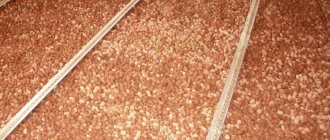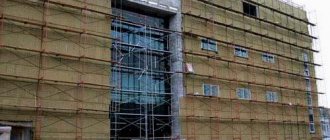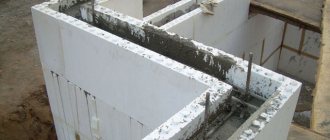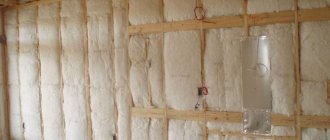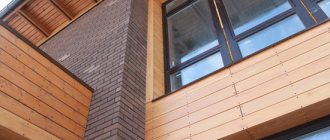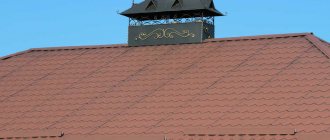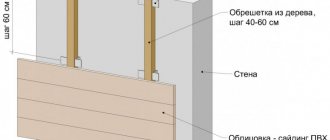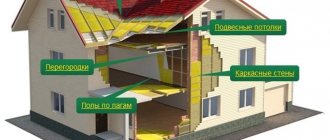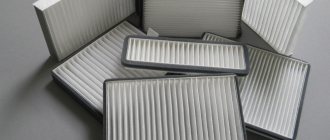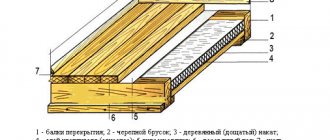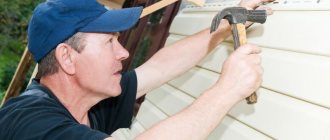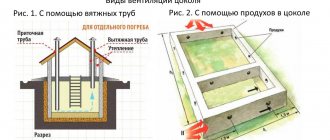All apartment owners in high-rise buildings sooner or later face the problem of wall freezing. In this case, the apartment does not have to be corner. There are many reasons why the walls of the house freeze through, and it can be cold inside the apartment - from microcracks on the walls of the house to a too windy area. Either this is not a large thickness of the brickwork of the walls, or the point is in the wall panels themselves.
Overhaul of interpanel seams or insulation of only the balcony will not relieve residents of the cold in the winter season. You need to thoroughly insulate the walls of your apartment.
Insulation of apartments in high-rise buildings (brick or panel), and indeed the insulation of walls, must be done from the outside of the building, since, having carried out the insulation from the inside, the walls themselves will remain cold. Insulation of apartments in high-rise buildings is most often done with the help of industrial mountaineering.
What is industrial mountaineering?
Industrial mountaineering allows you to perform various assembly work at height, buildings of any purpose, including external insulation of apartments, without resorting to the installation of scaffolding, cradles or aerial platforms. Specialized equipment allows industrial climbers and high-altitude climbers to reach even the most inaccessible places. At the same time, high-altitude climbers "get" to the place of installation work by descent and ascent on ropes.
Carrying out high-altitude work with the help of industrial climbers:
- First of all, it is high mobility;
- Fast organization of the workflow;
- Preparation for work takes no more than one hour;
- The possibility of lifting building materials, in places where the lifting equipment will not reach;
- Compared to calling a "tower" - carrying out high-altitude work with the help of industrial climbers is a rather economical option;
- Insulation of walls with the help of "promalpa" allows you to work in the most inaccessible places.
External wall insulation with foam - the advantages of the system
The system of wall insulation with polystyrene foam came to us from Europe, along with insulation with expanded polystyrene or mineral wool. This method allows you to increase the profitability of heating systems, while saving more than 50% of capital investments, in comparison with other methods of insulation.
Polyfoam is a readily available material that is very easy to install, and protection from the external environment provides no worse than expensive insulation systems. Styrofoam contributes to a high level of thermal insulation. So, 10-12 cm of polystyrene is comparable in properties with 4 m of reinforced concrete, 2 m of brick or 1.5 m of wooden wall, and its weight is an order of magnitude lower.
Polyfoam is the best material for construction work. It is practically weightless, lends itself to any kind of processing, is safe for residents, is not afraid of bacteria and provides good sound insulation. In cold climates, it is used for insulation, and in hot climates for protection from the sun. Moreover, you will no longer be disturbed by fungus and dampness in the apartment.
Mountaineering Service company performs high-quality wall insulation outside in Moscow. Prices for external insulation of apartments depend on a number of factors and are calculated individually for each order, based on the consumption of material and the amount of work performed.
| Surface preparation for insulation (base profile with fastening) | m. | from 300 |
| Thermal insulation using mineral wool board or expanded polystyrene | sq. m. | from 400 |
| Installation of a waterproof membrane | sq. m. | from 100 |
| Installation of ventilated facade panels | sq. m. | from 2 700 |
| Facing the facade with metal cassettes (alucobond) | sq. m. | from 3 100 |
| Leveling the surface of a wet facade after insulation (plaster) | sq. m. | from 350 |
| Facade cladding with sandwich panels | sq. m. | from 2 700 |
Internal wall insulation
From the outside, it may seem that internal wall insulation is much easier to perform, you can save on industrial climbers, and if the need arises, you can replace some materials yourself. But as many years of experience show - internal wall insulation - has a number of disadvantages, and is not very effective.
Disadvantages of internal insulation:
- the area of the rooms decreases, this is especially noticeable when several walls are insulated;
- wall insulation will also require a change in the interior;
- during the internal wall insulation, residents will temporarily have to change their place of residence;
- with internal insulation - the walls of the house are isolated from the heating system. A layer of insulation will prevent the walls from heating up. Condensation forms between the insulation layer and the wall, the lilac will begin to penetrate into the room, causing premature damage to the walls.
Advantages of internal insulation of an apartment:
The main advantage of the internal insulation of apartments is the low cost and the possibility of independent work.
Is it possible to carry out work by industrial climbers on external wall insulation in winter?
Carrying out facade work in the cold season is possible, but it is associated with some difficulties that affect the quality of implementation. Firstly, all plaster and glue mixtures used for external wall insulation are designed for use at temperatures above +5 C. In order to lower this limit, various salt-containing additives are added to the mixture. In theory, such additives accelerate the process of concrete hardening, improve its plasticity, and increase frost resistance. How much this corresponds to reality remains on the conscience of the manufacturers. We noticed that very often it is necessary to exceed the indicated dosage several times, otherwise the mixture literally freezes in the bucket. Secondly, the surface should be painted over dried plaster. In winter, it can take up to several weeks for the reinforcing foam layer to dry out. Thirdly, at temperatures below +5 C, it becomes necessary to use front frost-resistant polyacrylic paints on organic solvents. Such paints are practically not found in stores and require an order from specialized companies. In addition, they are much more expensive than conventional water-soluble façade. And the use of ordinary "summer" paint with the addition of various alcohol-containing liquids, as a rule, leads to its delamination after 2-3 seasons. The inconvenience of work and the use of "winter" materials leads to an increase in the cost of outdoor insulation in the cold season. In our opinion, the quality of order execution also suffers.
If you need to insulate the wall, and the weather is already cold, sometimes we offer the customer to mount the foam plastic in winter, install the ebb and lubricate all joints and abutments with a sealant. In this "mothballed" state, the system remains until warm weather in the spring, and then we perform plastering and painting work. There are two positive aspects in choosing this option: the heat is already present, and the payment for the work is made in two stages.
It is up to you to decide whether to carry out work on external wall insulation in winter, or to be patient and wait for spring. When we are asked about this, we say that the insulation of facades can be performed in cold weather, but if there is an opportunity and enough patience, it is better to wait for spring.
External wall insulation
The insulation is attached to the outer walls, covering all the outer walls of the apartment. Advantages of external wall insulation:
- living space in the inside of the room does not decrease;
- wall insulation work will take place outside, which means that in the interior of the apartment you will not have to re-do the repairs and leave for the duration of the work to “visit relatives”;
- cracks from periodic thawing and freezing of the walls will not appear on the walls of the apartment;
- the humidity inside the apartment will decrease significantly.
High-rise work on wall insulation
In order for heaters to reliably protect buildings from heat loss, they must be correctly mounted on the wall. There should be a closed system with reliable protection of the thermal insulation layer. The building materials market offers a large selection of heaters, the most popular are expanded polystyrene and mineral wool. Both materials promote optimal heat transfer and prevent condensation due to fluctuating temperatures.
Two ways of fixing thermal insulation
Industrial climbers mount insulation on the facade using glue mixtures, dowels and a metal frame (anchors, brackets, transverse and longitudinal strips). The mounting method depends on the finish. Glue is used for plastering systems, but if finishing is provided from porcelain stoneware, siding, corrugated board and other sheet materials, then high-rise people assemble a substructure - a metal frame. The insulation is hung on the anchor or inserted into the space between the frame rails.
A finishing layer is necessary to protect the insulation from the effects of precipitation and UV radiation. Finishing and insulating material protects the masonry from premature destruction.
Thermal insulation under plaster
The best option for a multi-storey residential building is a bonded thermal insulation system. This is the so-called "wet" facade, which is used in new buildings and in the rehabilitation of the operated fund. The advantage of multilayer plastering systems is that the manufacturers selected all the layers themselves. Each component of the system: adhesive composition, insulation, reinforcing mixture and finishing layer work exactly in such a bundle.
For polystyrene and mineral wool, different adhesive mixtures can be used. Mineral wool insulation board weighs more, so the adhesive composition for it must have high adhesion and tensile strength. A big plus of expanded polystyrene is that it is lightweight and practically does not exert additional stress on the facade. Mineral wool is used in high-rise buildings of various storeys. Expanded polystyrene, according to building codes, can be used to insulate houses up to the 9th floor.
Mineral wool has a long service life, it is durable, non-combustible, vapor permeable, and has low thermal conductivity. It can absorb moisture, unlike expanded polystyrene, which has zero hygroscopicity. Polyfoam will be cheaper, its thermal conductivity indicators provide reliable protection of buildings from heat loss.
Ventfacade
If, for the installation of plastering systems, high-rise people need to glue the insulation on the wall with high quality, then the ventilation facade technology involves the installation of a metal frame for fixing the facing material. Heaters are hung on brackets and fixed with long dowels.When arranging a ventilation facade, an air channel must remain between the thermal insulation and the facing layer through which moisture is removed. This gap allows the insulation to stay dry in any situation. Installation of insulation using the ventilation facade technology does not have temperature restrictions.
Mineral wool
Mineral wool slabs (mineral wool) are a heat-insulating material that can be used to insulate walls inside or outside.
A protective layer must be laid on top of any insulation. If mineral wool is used for internal insulation and sound insulation, drywall may well serve as such a protective coating. But with external insulation, the protective layer can be either siding or a layer of decorative plaster. All topcoats must be resistant to aggressive environmental influences.
Insulation of the walls of the house outside with mineral wool
Thermal insulation of the walls of the house outside with mineral wool Thermal insulation of the external walls of the house with mineral wool helps to keep the heat in a panel or brick house. This method is somewhat more expensive than when using expanded polystyrene, however, the advantages of cotton wool completely compensate for the temporary inconvenience.
Go →
External insulation of building facades outside carried out with special materials using dry or "wet" technology. It is important to choose the right main materials (insulation), as well as auxiliary ones - reinforcing mesh, adhesive mixtures and paints.
There are two common groups of heaters - inorganic and organic. The first group includes mineral wool of various types: basalt (stone), glass wool, mineral. Organics are petroleum products: expanded polystyrene, polystyrene foam.
Each material is used in certain conditions. For example, when using foam in the internal insulation, condensation may appear. Moisture accumulates between the wall and the bed and destroys the wall. Therefore, when choosing a heater, the nature of the walls, the type of insulation (external or internal), and the properties of thermal insulation are taken into account.
For insulation of building facades most often used are mineral wool, expanded polystyrene (polystyrene), polystyrene foam, basalt slabs.
Insulation installation
External insulation of the apartment with the help of a promalp must be carried out from the bottom up, horizontally laying out row by row. For the best effect of insulation - you should make a five-centimeter spade behind the panel seam, if the apartment is located in a brick house - you need to go outside the insulated apartment.
Styrofoam is attached to the wall with a special adhesive solution and a dowel of nails. If the insulation plates protrude beyond the windows, the excess must be cut down.
Effective insulation of apartments involves the formation of an air gap. This is especially important if mineral wool slabs are used as insulation. For the preservation of which in its original form, air circulation is needed between the insulation and the wall.
Insulation of the apartment from the outside - estimated cost
Advantages of external insulation of an apartment:
- increasing the comfort of housing (in the winter season it will be very warm in the house, and in the summer it will be fresh and cool);
- reducing the cost of heating services (since the payment for them rises annually, this is a rather weighty argument);
- the absence of the likelihood of mold and mildew on the surface of the walls inside the room (this will help keep residents healthy);
- increasing the sound insulation characteristics of the walls.
There are times when the outer walls do not meet modern thermal insulation requirements, up to a quarter of the heat loss of an apartment can occur. Therefore, work on the insulation of the facade of the house requires special attention.There are different building technologies for erecting walls, but two-layer walls, in which the supporting layer is insulated with a light wet method and finished with a thin-layer plaster, are heat-saving. To insulate the outer walls, it is necessary to accurately select a set of materials and use them comprehensively. For insulation it is necessary:
- Dowels, starting, corner, and other strips.
- Insulation (expanded polystyrene or mineral wool).
- Adhesive for fixing insulation in the form of a dry mixture.
- Paint.
- Mix for creating a reinforcing waterproof layer for plaster.
- Reinforcing mesh.
- Primer for plastering.
- Thin-layer plaster.
Mineral wool usually has a thickness of 5 - 20 cm and a good density, and expanded polystyrene with a thickness of 10 to 20 cm.The thickness of the material is explained by the fact that slabs are used not only for walls, but also for window and door openings, fillings and cracks, etc. etc.
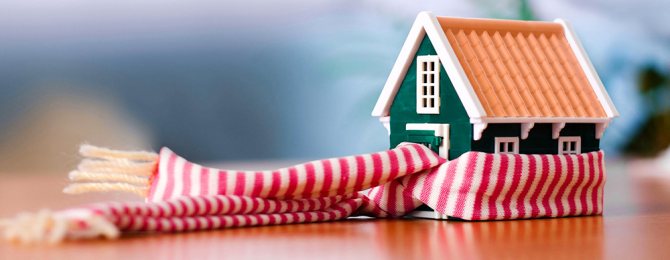
The work is carried out in a strict sequence: the walls are cleaned, primed, insulation is mounted on the glue mixture and fastened with dowels. A reinforcing layer is applied on top and the mesh is embedded in it. Then it is covered with another layer of reinforcing mixture. And after 2-3 days, the walls can be plastered and then painted. It is important to remember that the sheets of insulation must be placed taking into account the dressing of the seams and pay special attention to finishing around windows and doors, corners and joints. At the same time, it is also recommended to carry out work on sealing the interpanel seams in order to maximize the heat in the apartment. Otherwise, material deformations, cracks and cold bridges may appear.
Features of high-rise work
Since the main installation work when insulating an apartment is carried out at a high altitude using the necessary equipment, a distinctive feature of the external insulation of an apartment is the need to contact specialized companies.
You can independently insulate an apartment if you have the necessary experience in carrying out work at a height or if the apartment is on the ground floor.
The cost of insulating an apartment always depends on a number of important factors, such as the height of the building, the thickness of the insulation, the type of insulation (mineral wool is much more expensive than foam), and the quality of the finishing layer.
The cost of performing work on the insulation of the apartment will become known only after the master leaves the site, measurements, and the choice of finishing materials.
See also:
The cost of high-rise work Insulation of facades with foam or mineral wool Go to the news section >>>
The section "prices" shows the average prices for Rostov and the Rostov region, the cost of high-rise work in other regions is calculated individually.
Insulate the wall of the house
What to do when the walls are wet and cold? If the wallpaper is damp and peeled off? When sealing joints doesn't help simply because the walls aren't thick enough for our cold winters and rainy off-seasons? It is necessary to increase the thickness of the outer wall, thereby reducing its thermal conductivity. Then the "dew point" will move closer to the outside of the panel, and the house will become warm and dry. We are ready to insulate the wall of a house with climbers in two ways: using foam or mineral wool. Each method has been tested many times and is absolutely effective. Fundamental differences exist only in the appearance of the wall after insulation and in the cost of work.
Penoplex insulation
For this, a relatively "new" method of insulation is used - sheathing (cladding) of the outer walls of your apartment with special insulation made of low thermal conductivity polystyrene foam. Typically, certain types of dense polyester foam and binders are used for this.After fixing the foam on the outer walls of the apartment, its surface is plastered and fastened with a mesh. We are waiting for drying and put putty on top, then all the insulation is primed and painted over in a color close to the natural color of the building. The smallest result of foam insulation is an increase in the temperature in the house in winter by 2 degrees, and at the same time it is cooler in such an apartment in summer.
Wall insulation with mineral wool
Another reliable way to get rid of freezing in an apartment is to insulate the wall by climbers with mineral wool. This is how the apartment is insulated if the outer walls are very uneven and the installation of polystyrene is problematic. Then climbers fix a wooden frame on the wall, into which sheets of mineral wool are inserted. Siding is mounted on top, the color of which is closest to the color of the building. As a result, we get an analogue of a ventilated facade, which protects the walls from moisture and freezing. This method of insulating panels is more laborious, and the materials for it are more expensive than for the previous method of exterior insulation of the building.
Insulation cost and advice
The minimum insulation area is 20 sq.m. The cost of insulation for 1 sq.m. - 2,500 rubles. All materials for insulation of an apartment are usually placed at 500 rubles per sq.m. Before calling us, try to chat with the neighbors above you and below your apartment. It is very likely that they have the same problems and we will be able to help not only you. Then your insulation will cost 5-10 percent less and you will finally get to know your neighbors. If your apartment is located on the ground floor of a building, it is very likely that the cause of frost penetration and dampness lies in the wet basement of the house and our services may not help. We do not treat aquariums. When we receive applications from the last, top floor of the building, we are always interested in whether the roof is in order. When the roof is leaking, any wall insulation will not help as long as water penetrates from above. Another eternal problem is the freezing of the walls on the first floors of the building. Half of the problem is the presence of water in the basement. If the shaft has a wet basement, the walls can freeze even after insulation. We seal the joints between the basement and the apartment, but this does not always help.
Keep an eye on your home and it will give you warm evenings in winter and cool in summer!
Read about other methods of insulation - sealing interpanel seams and about inexpensive self-warming of an apartment from the inside.
Free departure, appraisal and consultation on the cost of insulation of apartments in Moscow and the Moscow region.
Advantages of facade insulation:
- Large selection of insulation and finishing materials
Insulation of houses is possible with polystyrene, expanded polystyrene, mineral wool, seamless compounds. In each case, an individual variant of heat preservation is selected. - Guaranteed bridging of cracks and wall defects
This is important when you need to insulate a large area and the sealing of the interpanel seams did not bring the desired effect. - The appearance and additional characteristics of the building are improved
Thanks to the decorative panels used for wall decoration, the building looks more modern, the issue of sound insulation and vapor permeability is being resolved. - There is no need to carry out internal wall insulation in the room and bring discomfort to the living of household members

